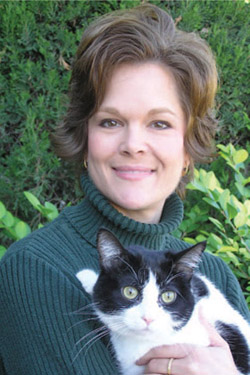AAFP president wants to be model for volunteer leaders

If you see one cat a year, you're a feline practitioner, and our goal is that one cat gets absolutely the best that you have to give it.
— DR. ROBERTA K. LILLICH, 2009-2010 PRESIDENT, AMERICAN ASSOCIATION OF FELINE PRACTITIONERS
Dr. Roberta K. Lillich says she isn't what comes to mind when people think of a leader in the American Association of Feline Practitioners.
The conventional wisdom about the AAFP, according to Dr. Lillich, the association's 2009-2010 president, is it's an "elitist clique" of feline-exclusive veterinarians whose leaders have been in practice for many years. Dr. Lillich plans on spending her year in office setting that perception on its ear.
"I am a younger, mixed-animal practice co-owner, and I've got three children, so I'm a little bit outside the scope of what most people think of as a leader of the organization," Dr. Lillich said.
Lately, the AAFP has been trying to get that message out to veterinarians who may also be interested in volunteering for a veterinary organization but worry about the time commitment. Dr. Lillich hopes her presidency will illustrate what the AAFP is really about and that superhuman time management skills aren't necessary to get involved.
"Most people who come to our meetings are just like me: they're trying to balance a young family with their practice," she continued, "and I wanted to make the point that if I can do it, then everyone else out there can give something back."
She also wants companion animal practitioners to understand that the AAFP isn't just for veterinarians who treat only cats. "If you see one cat a year, you're a feline practitioner, and our goal is that one cat gets absolutely the best that you have to give it," Dr. Lillich explained.
A 1996 graduate of The Ohio State University College of Veterinary Medicine, Dr. Lillich joined the AAFP 11 years ago. She got involved in the organization's leadership because her six-partner practice in Abilene, Kan., encourages participation in organized veterinary medicine. In fact, two of Dr. Lillich's co-owners are former presidents of the American Association of Swine Veterinarians.
"There is an expectation that the profession has given you a lot as an individual, and you need to find a way to give back as well," said Dr. Lillich, who first got involved in the AAFP through its Program Committee, which she currently chairs.
Her involvement in the AAFP has been supported by her husband, James, a board-certified veterinary surgeon and an associate professor of equine surgery at Kansas State University.
As the "cat person" in her clinic, Dr. Lillich said the AAFP is a natural fit for her, even though she also regularly sees canine patients. The association helps veterinarians who want to make the feline portion of their practice more profitable but aren't sure how to go about it, she said.
One of the innovations Dr. Lillich's practice has incorporated is to match the client to a specific skill set instead of a particular veterinarian. And so far, it's worked well.
"Our staff knows to evaluate the needs of a patient and to align them with the veterinarian best capable of serving those needs," Dr. Lillich explained. "It empowers the staff to make decisions on what they think will be the best care for the pet, the clients realize they're getting the best care for the pet, and there's no animosity among the team, veterinarians, or clients."
Another reason Dr. Lillich was drawn to the AAFP is its dedication to feline health and welfare and its offering of high-quality continuing education. Not too long ago, cats were thought of as small dogs when it came to treatment options, Dr. Lillich explained, which is why the association was formed. Today, there is much more education dedicated to addressing the medical, social, and behavioral needs of cats.
Recruiting new members is essential to keeping the organization strong and vibrant. In fact, the AAFP, which has around 2,000 members, has a goal of increasing those numbers by 25 percent next year, Dr. Lillich said.
The association wasn't always so focused on members, however. Back in 2003, during a strategic planning session, the AAFP leadership realized the association had an image problem—that it was seen as an exclusive group of feline-only practitioners, Dr. Lillich explained. Since then, organization leaders make a point of reaching out to new members. They also identify members they encourage to get involved.
"Every single one of the people in leadership right now is there because somebody did that for them—tapped them on the shoulder and said, 'Hey, I want to hear what you have to say,'" Dr. Lillich said.